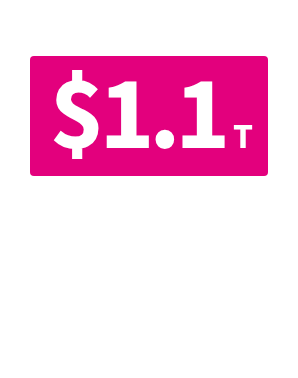How are public schools funded?
Public school funding comes primarily from local and state governments, while the federal government provides about 8% of local school funding.
Public schools in the US serve about 49.5 million students from pre-K to 12th grade. But how does it all get funded?
It's primarily a combination of funding from local and state governments, along with a smaller percentage from the federal government. Here's a breakdown.
Where does school funding come from?
In the 2019-2020 school year, 47.5% of funding came from state governments, 44.9% came from local governments, and the federal government provided about 7.6% of school funding.
Federal funding for schools
Most federal funding for public schools comes from the Child Nutrition Act, Title I, and the Individuals with Disabilities Education Act (IDEA), followed by other programs, according to 2018-19 school year data.
Title I grants
Title I provides funds to school districts with large numbers of low-income students. According to data from 2015-2016 school year, nearly 56,000 schools received money from Title I grants, serving more than 26 million students. About $14.6 billion went toward funds for Title I grants during the 2019-2020 school year, according to the National Center for Education Statistics.
Individuals with Disabilities Education Act
The Individuals with Disabilities Education Act (IDEA) provides funding to help children with disabilities receive quality special education and related services that are designed to meet their unique needs, according to the Education Department. In 2020–21, 7.5 million students received special education services under the Individuals with Disabilities Education Act (IDEA). Some $14.3 billion in federal funding went toward IDEA in 2022.
Child Nutrition Act
During the 2020 fiscal year, $23.6 billion in federal funds were allocated for child nutrition programs, providing free or reduced lunches to eligible students.
Other federal funding
Federal funds also went towards Head Start programs (supporting children from birth to age 5 in low-income families), magnet schools, gifted and talented programs, Impact Aid (assistance to districts with children residing in areas including Indian lands, military bases, and low-rent housing properties), vocational programs and Indian Education programs.

State funding for schools
Some states allocate more money for public K-12 schools than others. In five states, two-thirds or more of K-12 public school funding comes from state revenue.
State revenues are raised from a variety of sources, primarily personal and corporate income and retail sales taxes, as well as taxes on tobacco products, alcoholic beverages, and lotteries—depending on the state.
Each state uses a different funding formula to determine how money for K-12 education is raised and how much each school district receives in a given school year. Funding formulas calculate whether school expenditures come from state governments versus local governments, such as counties, cities, or school districts themselves.
In at least 35 states, the state government sets a base level of funding per student that all school districts receive, according to a Congressional Research Service report that summarized various approaches of categorizing states' education funding models.
Local funding for schools
Local school revenue comes from cities, counties, or the school districts themselves. About 81% of local funding for schools comes from property taxes.
Other revenue comes from parents via parent-teacher associations and other groups. Schools also receive some private revenue from tuition, transportation fees, food services, district activities, textbook revenue, and summer school revenue.
Property taxes are a major source of school funding
According to the Department of Education's National Center for Education Statistics, property taxes contribute 30% or more of total public school funding in 29 states.
- More than 60% of total public school funding came from property taxes in New Hampshire—the highest of any state.
- On the low end, Vermont had such little funding from property taxes that it rounded to zero. And Hawaii's one school district did not receive any funding from property taxes.
How are charter schools funded?
Public charter schools are funded by state and local governments and may also receive federal funding through Department of Education Charter School Program grants. Charter schools are independently run under an agreement (charter) with the state, district, or another entity. School choice programs offered in some states give parents the option to enroll their kids in charter schools, magnet schools, or opt for home-schooling.
How has school funding changed over time?
Over the past decade, funding provided by local and state governments has increased steadily while federal funding dropped by $30.2 billion. This has resulted in a lower share of school funding from the federal government, dropping from 12.5% in the 2010-11 school year to 7.6% in the 2019-20 school year.
Although federal funding for public schools plays a minor role, it supports programs like Title I, IDEA, and the Child Nutrition Act. As federal contributions have decreased over the past decade, the responsibility for supporting education increasingly falls on local and state entities, highlighting the role of local property taxes and state revenues in funding public education.
Learn more about the state of education in the US, and get the data directly in your inbox by signing up for our email newsletter.
Keep exploring
Page sources
National Center for Education Statistics
Public School Revenue Sources
Congressional Research Service
State and Local Financing of Public Schools